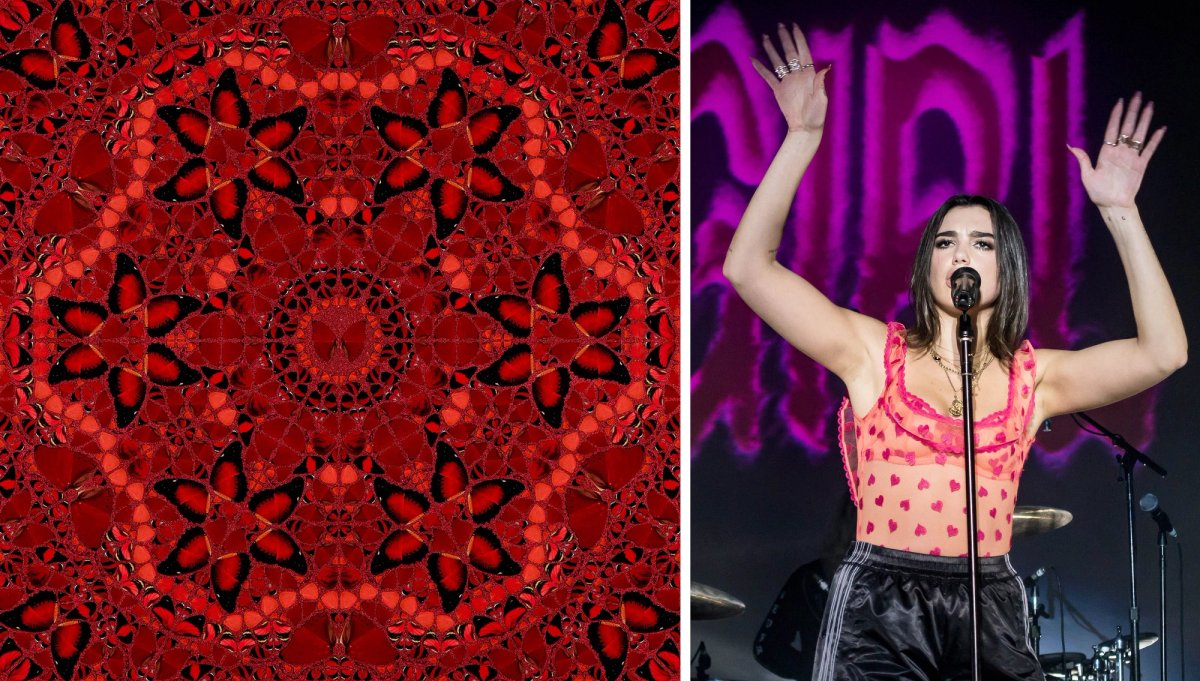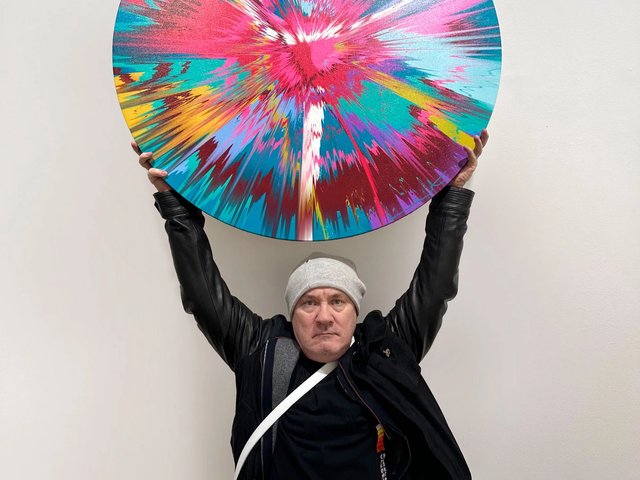Late last year, the Grammy award-winning pop star Dua Lipa posted a photograph to her Instagram Stories showing off four Damien Hirst butterfly prints from the series The Empresses along with the caption “finally put these babies up!!! thank you @damienhirst @heni 🦋❤️.”
The works are titled Wu Zetian, Nūr Jahān, Theodora and Taytu Betul. There is a fifth piece in the series named Suiko, although it is unclear whether the singer owns that one too. The five glittery prints on aluminium panel feature kaleidoscopic compositions of red butterfly wings and are named after notable female rulers through history.
Empress Wu Zetian ruled Tang dynasty China in the late seventh century and is considered the country’s only legitimate female sovereign. Nūr Jahān was the de facto ruler of Mughal India in the 17th century and a skilled diplomat, architect and hunter. Byzantine empress Theodora and her husband, emperor Justinian, are saints in the Orthodox Church. Taytu Betul was the empress of Ethiopia from 1889 to 1913 and an advocate of anti-colonial resistance. Suiko was Japan’s first empress, ruling from 593 until 628, and is credited with establishing Buddhism as the state religion.
The five limited editions are part of an NFT collection produced by Hirst and the London-based art and technology company Heni in early 2022. Numerous versions of the prints are currently offered for resale through the auction house Sotheby’s and online platforms such as 1stDibs and eBay. Heni allowed buyers the option to purchase physical prints of The Empresses directly or to delay receipt for up to three years by purchasing a “Heni Editions NFT Deed”. This allowed NFT buyers to pass on the rights to a physical print if they traded their NFT.
It is not known whether Lipa owns other works by Hirst, but the appeal of this particular series is not hard to guess. The singer often references butterflies in her fashion choices, such as the Swarovski crystal mesh Versace dress she wore to the 2021 Grammy Awards, and they are a central motif of her capsule streetwear collections with the brand Puma.
Hirst has used similar imagery since his early career, installing live butterflies in his first London solo show in 1991 and incorporating real butterfly wings in his later Kaleidoscope paintings and Mandalas series. The artist has said he was first inspired by the chance discovery of a Victorian tea tray decorated with butterflies under glass. The butterfly has come to symbolise life and death in his work, as well as beauty and freedom.





